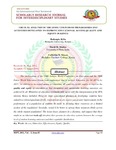| dc.description.abstract | The declarations of the 1990 Jomtien World Conference on Education and the 2000 Dakar World Education Forum both emphasized that to achieve Education for All (EFA) by 2015 , in addition to increased access to education, all countries would require to improve the quality and equity of education so that recognized and measurable learning outcomes are achieved by all. Ministries of education worldwide fully agree with this interpretation of the EFA mission, Kenya included. However, many educational planners in developing countries have raised two related questions: firstly, when resources are scarce, can greater improvements in the performance of a population of students be made by focusing these resources on a limited section of the population? Secondly, would it be better to spread these resources thinly across the whole student population? The issues leave planners in a dilemma, and suggest that there might be an inherent trade-off situation that operates in education systems between the average level of student learning outcomes and their equitable distribution. | en_US |

